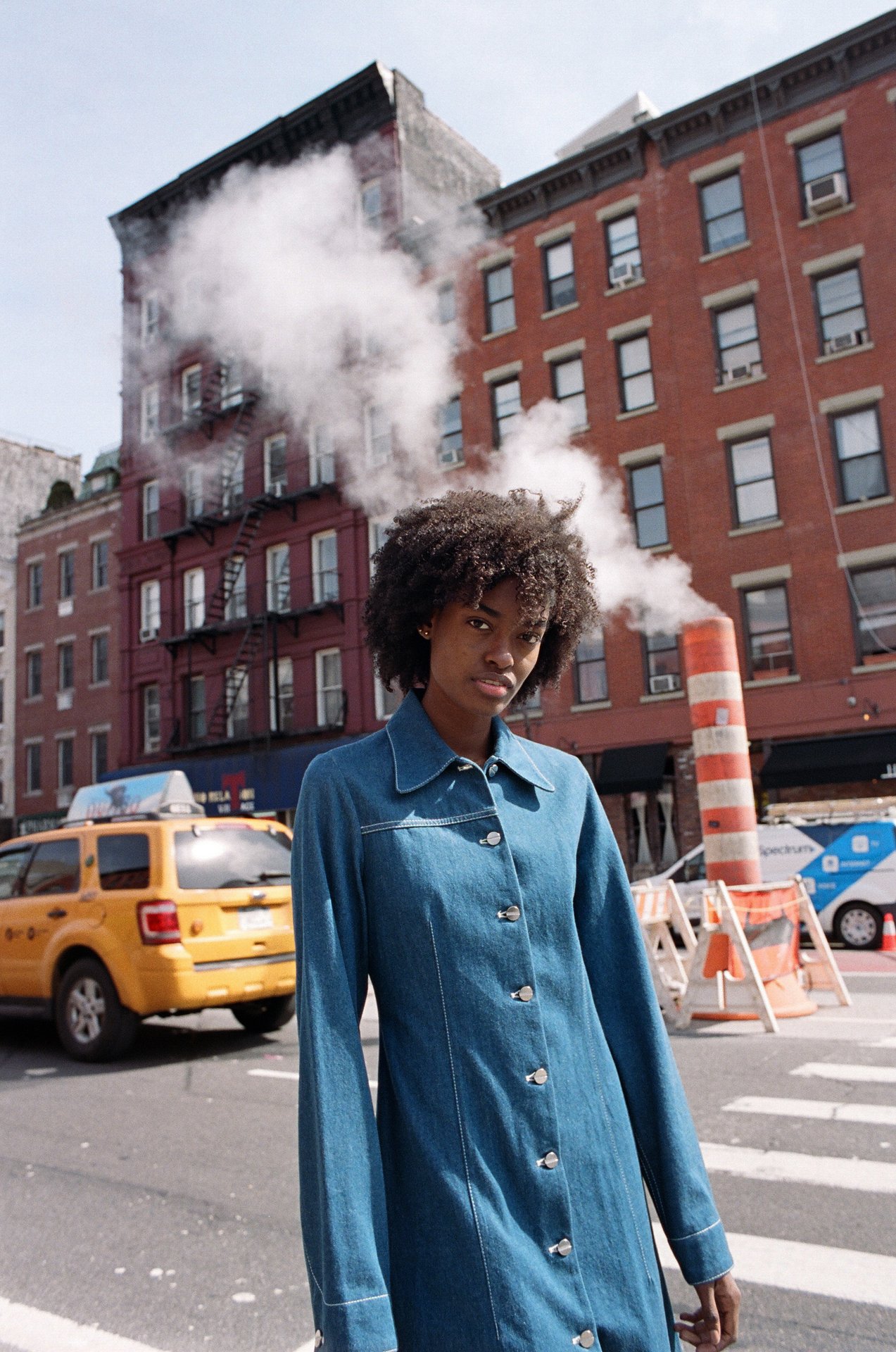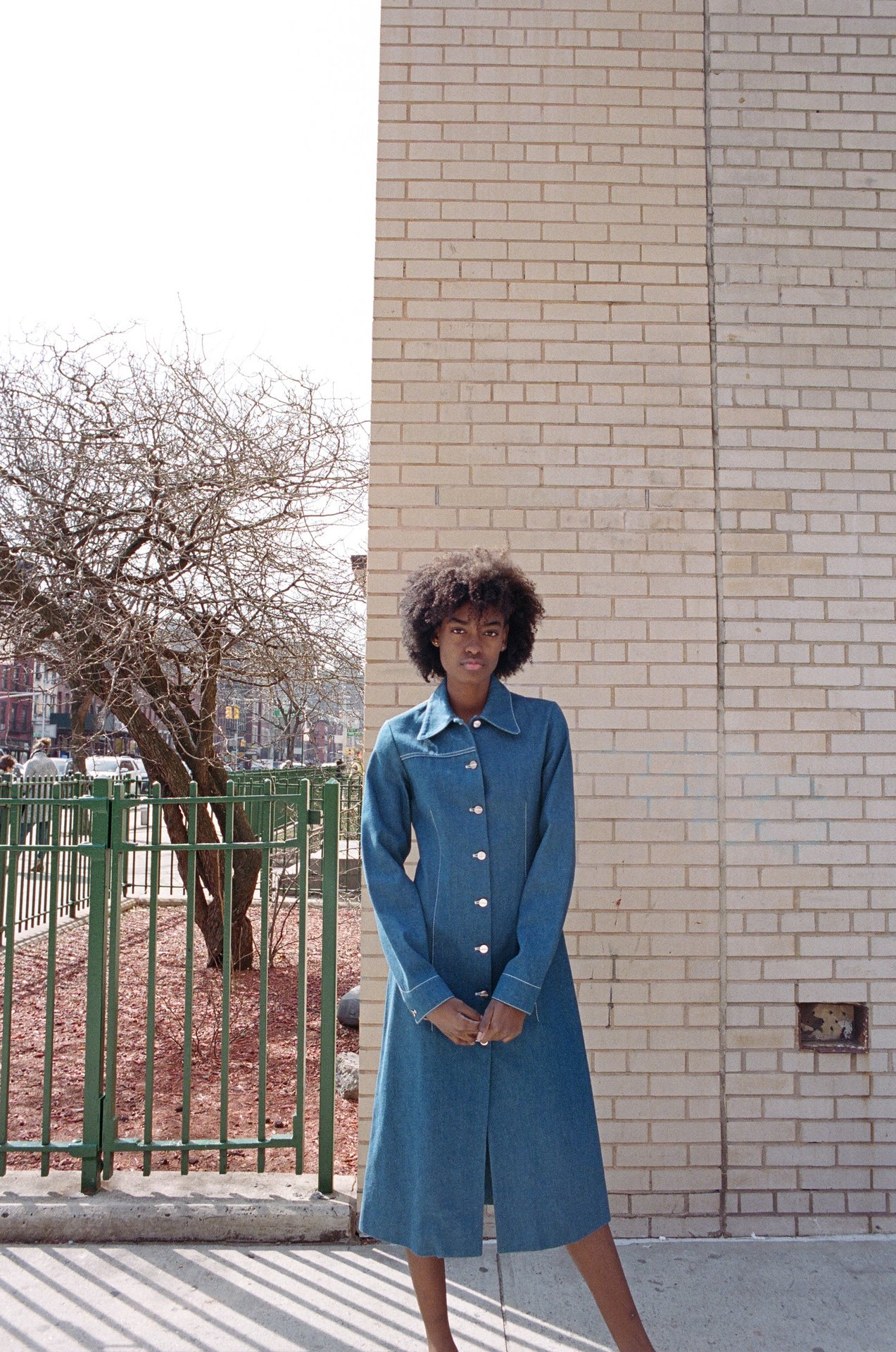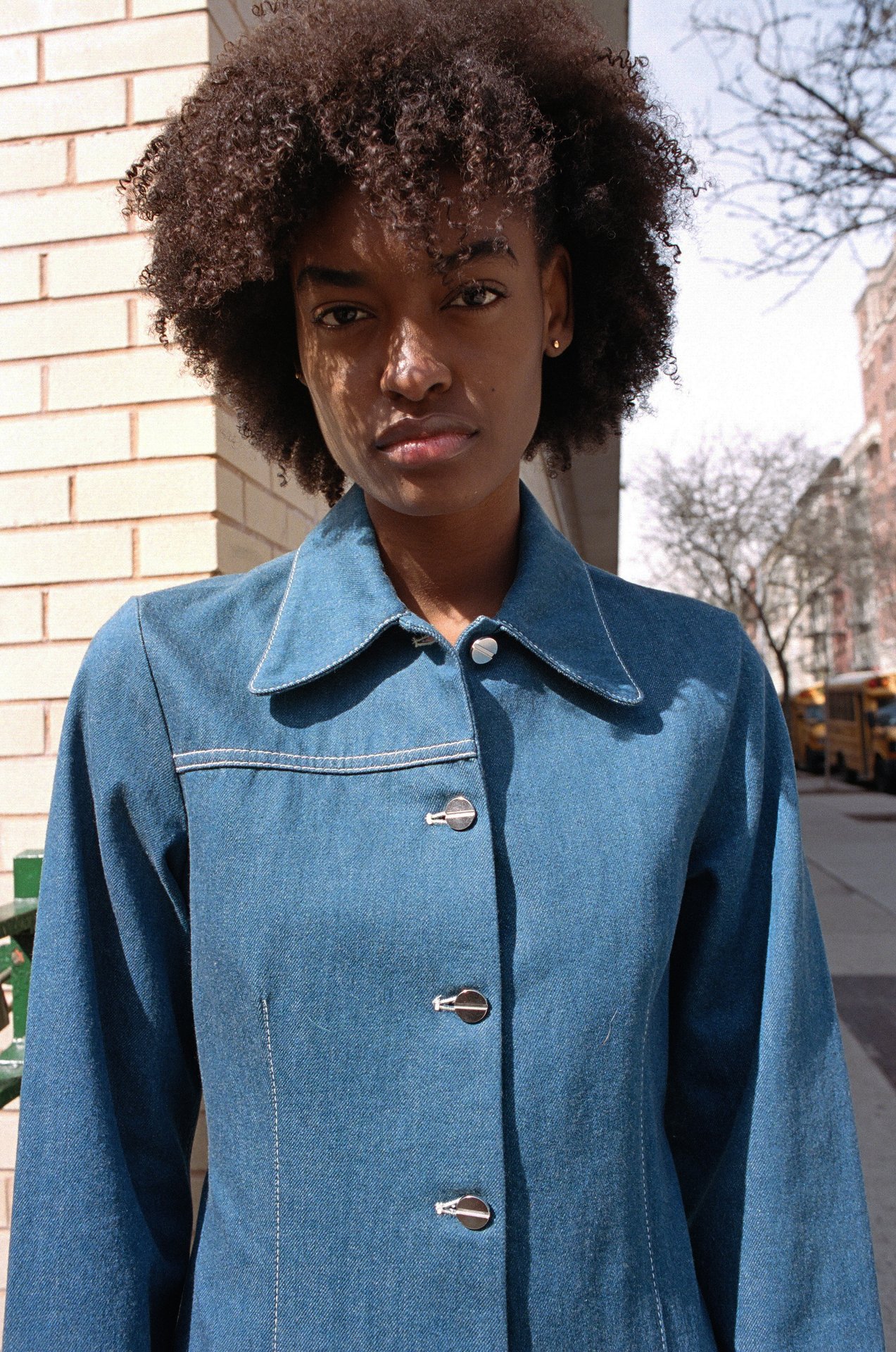How would you describe your brand?
It’s still evolving. The person who buys our clothes really knows what they want. It’s a confident person. I want the clothes to feel approachable. I want the customer to feel a sense of strength and ease. You can pair them with a heel or throw on some Converse, and do whatever you want. It’s versatile.
What sets you apart from other designers?
We are like a family here. I want to make something that all of us want to wear. It’s not just about me and my perspective.
We are trying to be conscious of community and bringing people into our space. A lot of [fashion] references are gorgeous images of primarily white men and women. I’m a young Latina woman and I don’t see myself in these references, even if I love the clothes, imagery, lighting, and the palette. We want to bring people from diverse backgrounds into our team. Casting is super important to me for shows and photo shoots. We bring in men, women, trans, gay. I’ve always wanted it to feel real. I want an artist and a writer and director and a sex therapist. I want real humans.
What has been the most difficult part about starting your business?
So many things. At art school, you have so many resources and facilities to use, and then you graduate and you’re left out in the cold. You think, “how am I going to make two ends meet and find the resources to do what I want to do? Resources meaning finances and individuals.”
I don’t have a background in business. In art school, I found this amazing artist community that I know and love, but I had a really hard time finding someone on the business side to tell me how much I should be spending a year, and which factory I should be using. I literally went to Columbia one day and put up ads for a business manager. Someone who found my clothes at Opening Ceremony sent me a cold email that she wanted to work with me. Now she’s like family. It worked out, but fashion can be really isolating, especially in womenswear which is so competitive.









